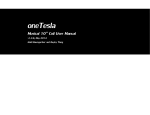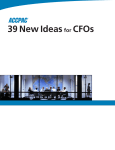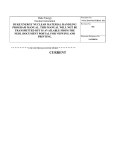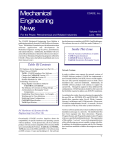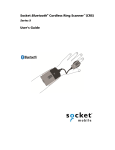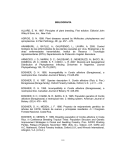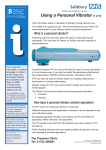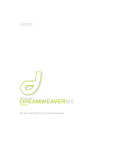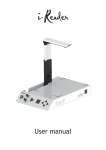Download A Database Driven Website for A Commercial Vehicle Dealer
Transcript
A Database Driven Website for A
Commercial Vehicle Dealer
Stuart Read
Computing and Management
Session (2002/2003)
The candidate confirms that the work submitted is their own and the appropriate credit has
been given where reference has been made to the work of others.
I understand that failure to attribute material which is obtained from another source may be
considered as plagiarism.
(Signature of student) _______________________________
SUMMARY
The Aim of The Report
To produce a database driven website that can be maintained by a non IT specialist for a
commercial vehicle dealer. The company currently has a website but it has been under
construction for over a year.
Minimum Requirements
The minimum requirements were agreed as follows:
Website that displays a list of current vehicles in stock
12
Database to hold stock with user friendly system for adding and removing vehicles.
12
A requirements form on the website to allow customers to submit the vehicle type
12
they are looking for.
Training Manual for staff (Non IT specialist).
12
Marketing of Website - Advice to client on how to get the site seen by customers.
12
In Addition to producing a website it was hoped that this project would help provide better
structure and organisation of my client’s vehicles. Research into the way my client operates
was carried out. As a result, of this research provided the opportunity for recommendations
to be made with a hope of making improvements.
The aims and objectives of this project were successfully completed and implemented. The
website was created using ASP and Microsoft Access database. It was developed and
tested from my personal web space but has since been moved to a host provider. The site
can be found at the following address:
www.paceservices.co.uk
Stuart M Read
I
ACKNOWLEDGEMENTS
I would like to acknowledge all the people who have helped and supported me through this
project. There are as follows
My client, Clifford Scotchings for letting me undertake this project and for putting up
12
with the constant phone calls.
Bill Whyte for advice given in progress meeting.
12
Friends and family. Special mention goes out to my mother and girlfriend for their
12
encouragement, support and patience through this whole process.
Andy Beanland for help setting up my server.
12
Thank you.
Stuart M Read
II
CONTENTS PAGE
1. INTRODUCTION………………………………………………………………………… 1
1.1. The Company………………………………………………………………………. 1
1.1.1. Organisation………………………………………………………………… 1
1.1.2. Working Practices………………………………………………………….. 1
1.1.3. The Need……………………………………………………………………. 1
1.2. The aims and Requirements……………………………………………………… 1
1.2.1. The Aim of the Report……………………………………………………... 1
1.2.2. Minimum Requirements…………………………………………………… 2
1.3. System Development……………………………………………………………… 2
1.4. Deliverables………………………………………………………………………...
2
1.5. Scope of the Project………………………………………………………………
3
1.6. Structure of the Report
3
2. RESEARCHING PACE SERVICES…………………………………………………... 4
2.1. Research Methods…………………………………………………………………. 4
2.1.1. Questionnaires……………………………………………………………… 4
2.1.2. Interviews……………………………………………………………………. 4
2.1.3. Method Selected…………………………………………………………… 4
2.1.4. Observations of Competitors……………………………………………… 4
2.2. Interview Results…………………………………………………………………… 5
2.2.1. Stock Control……………………………………………………………….. 5
2.2.2. Paceservices.co.uk………………………………………………………… 5
2.2.3. IT Resources………………………………………………………………... 6
2.2.4. Website Brief………………………………………………………………... 6
3. PACESERVICES.CO.UK REQUIREMENTS………………………………………… 7
3.1. Website Contents…………………………………………………………………... 7
3.2. Database Requirements…………………………………………………………... 7
3.3. Maintenance Issues……………………………………………………………….. 7
3.4. Access Issues………………………………………………………………………. 8
3.4.1. Web Browsers………………………………………………………………. 8
3.4.2. Authentication Issues……………………………………………………… 8
4. BACKGROUND RESEARCH………………..……………………………………….. 9
4.1. Database Architecture…………………………………………………………….. 9
4.2. Choosing Development Tools……………………………………………………. 10
Stuart M Read
III
4.2.1. Database……………………………………………………………………. 10
4.2.2. Scripting Language………………………………………………………… 12
4.2.3. HTML Editor………………………………………………………………… 12
5. DESIGN AND IMPLEMENTATION……………………..……………………………. 13
5.1. User Interface Design……………………………………………………………… 14
5.2. Interface……………………………………………………………………………... 14
5.3. Database Design…………………………………………………………………… 14
5.3.1. Pictures……………………………………………………………………… 15
5.3.2. Integrity……………………………………………………………………… 15
5.3.3. Security……………………………………………………………………… 15
5.4. Online Contact Form………………………………………………………………
16
5.5. Hosting………………………………………………………………………………. 16
5.6. Problems Encountered on Implementation……………………………………… 16
6. EVALUATION……………………………………………………………………………. 18
6.1. Unit Testing…………………………………………………………………………. 18
6.1.1. Unit Testing Results………………………………………………………... 18
6.2. User Acceptance Testing………………………………………………………….. 18
6.2.1. Advantage and Disadvantages of Usability Questionnaires…………… 19
6.2.2. Questionnaire Design……………………………………………………… 20
6.2.3. User Acceptance Results………………………………………………….. 20
6.3. Future Work…………………………………………………………………………. 21
6.3.1. Minor Tasks…………………………………………………………………. 21
6.3.2. Major Tasks…………………………………………………………………. 21
7. CONCLUSIONS…………………………………………………………………………. 22
7.1. Conclusion…………………………………………………………………………... 22
7.2. Reflection……………………………………………………………………………. 22
REFERENCES……………………………………………………………………………….. 24
APPENDIX A – Project Schedule
APPENDIX B – Interview Transcript
APPENDIX C – Testing
APPENDIX D – User Manual
APPENDIX E – Marketing Report
Stuart M Read
IV
1. INTRODUCTION
1.1 The Company
1.1.1 Organisation
Pace Services is a commercial vehicles and trailer unit’s retailer. It was formed in Oct 1988
as a sole trader and is own by my client Clifford Scotching. The business is located in a
commercial yard just outside Leighton Buzzard, Bedfordshire.
1.1.2 Working Practices
Currently the business operates with stock levels of between 20 – 30 vehicles/trailers.
These are not all located at the base in Leighton Buzzard. Items not held at the base are
usually stored at place of purchase and shipped to customers by use of delivery companies.
Therefore my client relies heavily on pictures of vehicles as a selling point. The customer
base is generally UK wide, but overseas customers are not unknown. There is no formal
system of keeping track of items held, i.e. knowledge is held in my clients head.
1.1.3 The Need
Pace Services business activity relies heavily on the use of pictures and emails. Customers
phone my client with a vehicle spec they desire and if an item is held in stock, pictures of the
item will be emailed. If an item is not held my client will phone around contacts to find a
vehicle matching, i.e. like a broker. These items may be located all over the UK and hence
pictures allow my client to give customers an indication.
As stated above my client’s
customer base is from the UK wide plus some international customers.
Therefore
development of the company website would give customers access to pictures of stock plus
it may expand the companies foreign export trade.
1.2. The Aims and Requirements
1.2.1 The Aim of the report:
To produce a database driven website that can be maintained by a non IT specialist for a
commercial vehicle dealer. The company currently has a website but it has been in under
construction for over a year.
Stuart M Read
1
1.2.2 The Minimum requirements were agreed as follows:
Website that displays a list of current vehicles in stock.
12
Database to hold stock with user friendly system for adding and removing vehicles.
12
A requirements form on the website to allow customers to submit the vehicle type
12
they are looking for.
Training manual for staff (Non IT specialist).
12
Marketing of website - Advice to client on how to get the site seen by customers.
12
In Addition to producing a website it was hoped that this project would help provide better
structure and organisation of my client’s vehicles. Research into the way my client operates
was carried out. As a result, this research provided the opportunity for recommendations to
be made with a hope to make improvements.
1.3. System Development
In order to carry out this project successfully it was important that an outline of the different
stages were highlighted and a timescale decided. These stages are summarized as follows:
1. Project Aim
2. Objectives, minimum requirements and deliverables
3. Background research
4. Full interviews with client to discuss design and confirm requirements
5. Produce database
6. Produce Website
7. Requirements Page
8. Testing and review of web site functionality
9. Produce marketing report
10. Produce training manual
11. Evaluating website and database with client
12. Writing of report
A Gantt chart of projects schedule can be found in appendix A.
1.4 The Deliverables
Database driven website
12
User manual
12
Marketing report
12
Stuart M Read
2
1.5 Scope of Project
Due to my technical ability, beginner in all forms of web development, and the given time
constraints, it was only possible to produce a basic but fully function website. There is much
scope for development and improvement, of which I have agreed to work with my client.
It was the intention of this project to centre on the core requirements of my client. It provides
the customers with all the necessary information and facilities for finding stock and a method
for communication.
1.6 Structure of Report
The remainder of this report will be split into the following chapters:
Chapter 2: RESEARCHING PACE SERVICES
Discusses the research into Pace Services, providing an analysis of interviews.
Chapter 3: PACESERVICES.CO.UK REQUIREMENTS
Sets out the requirement for the website taking into consideration current resources and my
client’s requirements of the system.
Chapter 4: BACKGROUND RESEARCH
Research dealing with the selection of software and database architecture.
Chapter 5: DESIGN AND IMPLEMENTATION
Details the design of the website and the underlying database. Including issues dealing with
security, maintenance and human computer interaction.
Chapter 6: EVALUATION
Deals with the testing and evaluation of the website and setting out a scope for future work.
Chapter 7: CONCLUSION
Draws a conclusion on the whole project with a personal reflection of the experience
Appendices:
Additional information including website manual, marketing report and interview write-ups.
Stuart M Read
3
2. RESEARCHING PACE SERVICES
2.1 Research Methods
The following research methods were considered:
2.1.1 Questionnaires
Questionnaires are an inexpensive way to gather data from a potentially large number of
respondents. Often they are the only feasible way to reach a large number of reviewers that
are graphically wide spread. Although regarded as inexpensive in terms of financial cost,
they are timely process and require a great amount of design and analyses if they are going
to be put to there maximum potential.
Attention must be given to the format of the
questionnaire, e.g. open or closed questions. Complex questions are difficult to ask and
subjects are unlikely to be willing to spend a long time filling them in. The style of the
questionnaire must be reviewed to confirm this is no opportunity for misleading or bias
questions.
2.1.2 Interviews
In contrast, interviews allow for more complex questions to be discussed. You are able to
build a rapport with the respondent and often observe as well as listen to what they have to
say. It provides you with a means to lead the conversation in a direction you want so that
you can get the answers you need. The one problem with the interview method is its inability
to cater for people that are geographically wide spread. Also only suitable with a small
sample rate.
2.1.3 Method Selected
With a sample size of one client, the use of questionnaires is inappropriate. The method
would not allow me to gain all the information or understanding needed to establish an
understanding of business practices and requirements. See interview transcript in appendix
B.
2.1.4 Observations of Competitors
Observations of competitor’s websites gave an indication of expectation regarding my
project.
A brief look at the following sites gave clear examples of layout, design and
functions offered.
Stuart M Read
4
http://www.chapmancommercials.co.uk/
12
http://www.jgecommercials.co.uk/
12
http://hometown.aol.co.uk/ruthjroberts/index.html
12
http://www.truck-city.co.uk/
12
http://www.geoff-sipson.co.uk/
12
2.2 Interview Results
2.2.1 Stock Control
There is no formal method that keeps tract of stock control. Details of items are kept in my
client’s memory with pictures held on 3.5” floppy disk. Stock is not always held in the yard in
Leighton Buzzard and can be located throughout the UK.
2.2.2 Paceservices.co.uk
The company currently has a website, but this has been under construction for over two
years. Freenetname.co.uk currently hosts the site, which allows Pop3 Mail Account, Domain
Name Registration and 20Mb UNIX Web space.
Figure 2.2.2 www.paceservices.co.uk home page.
The website has never gone beyond this initial development stage and hence not been of
any benefit to the company.
Stuart M Read
5
2.2.3 IT Resources
Hardware/Software - Paces services own one workstation PC. The system specification is
as follows:
650 MHz Processor
12
256 MB ram
12
20GB Hard Drive
12
12
Win 98
Full Ms Office (including MS Access)
12
All in one hp officejet printer
12
Pace Services uses an AOL Internet connection for many years now. Changing of the
internet provider is not an option due to email address.
My Client feels comfortable
operating AOL and does not want to change.
IT Literacy standards are currently at a basic level, with my client feeling comfortable to
perform the following actions:
Windows navigation
12
producing word documents
12
basic Excel spread sheets
12
Sending and receiving faxes
12
internet browsing
12
The use of WinZip
12
Email including sending and receiving file attachments.
12
No experience or knowledge is held in the use of databases as with any html or web
development tools.
This includes FTP, which will have to be taken in account when
producing the website and supporting documentation.
2.2.4 Website Brief
The requirements are listed section 1.2. In terms of the design and functionality, emphasis
was put on simplicity and fast execution speeds. A criticism, put forward by my client, was
the length of time some sites took to download pictures. He felt that people get frustrated
with waiting times, resulting in abandonment.
Stuart M Read
6
3. PACESERVICES.CO.UK REQUIREMENTS
The purpose of this chapter is to take all the information from the research undertaken and
my experience of systems analysis to produce the requirements of the website.
3.1 Website contents
The website should contain the following:
Company logo.
12
Company detail (Address, telephone, fax, email).
12
A brief description about company.
12
Database driven web page to display items for sale. Pictures of items must be
12
included.
An online form for contacting Pace Services.
12
3.2 Database Requirements
The underlying database will need the following:
Flexibility to cope with different types of stock.
12
Ability to interaction with an appropriate scripting language, to build the web pages.
12
Allow data queries, i.e. with stock information retrieval.
12
Allow insertions, deletions, editing from its contents.
12
Allow authentication.
12
3.3 Maintenance Issues
The main issue that resulted in Pace Services current web offering being left uncompleted
was the maintenance issue. Due to my client not having any technical expertise and not
having the resources to be constantly pay out for this service, it is important that any
maintenance of the website can be executed easy and effective as possible. Maintenance
tasks will allow for adding, deleting and editing of stock information.
3.4 Access Issues
Users of this website are geographically widespread and there is therefore no way to
determine the platform or browser that they will be using. Therefore the following issues
must be considered.
Stuart M Read
7
3.4.1 Web Browsers
The two must commonly used browser today are Microsoft Internet explorer and Netscape
Navigator. It is important to note that while these are both based around the HTML 4
standards set by the W3 consortium there are still a number of differences in how they
display web page contents. It is for this reason that the website has been designed to try
and avoid browser specific features.
3.4.2 Authentication Issues
Whilst the website is going to be accessibly by all the maintenance pages will only be
accessed by my client. In order to restrict these pages, authentication procedures will have
to be put in place. The most suitable will be the use of usernames and passwords. They
may be more secure and advance systems but these are beyond my technical expertise and
beyond what I and my client feel is necessary.
Stuart M Read
8
4. BACKGROUND RESEARCH
The purpose of this chapter is to provide a technical specification to meet the requirements
stated in previous chapter. I shall justify choice in development tools by looking at the each
specific area of design in turn.
4.1 Database Architecture
A commonly used view of data approach is the three-level architecture suggested by
ANSI/SPARC (American National Standards Institute/Standards Planning and Requirements
Committee). ANSI/SPARC produced an interim report in 1972 followed by a final report in
1977. The reports proposed an architectural framework for databases. Under this approach,
a database is considered as containing data about an enterprise. The three levels of the
architecture represent three different views of the data:
External - The external level is the view that the individual user of the database has.
12
This view is often a restricted view of the database and the same database may
provide a number of different views for different classes of users.
Conceptual – The conceptual level is the representation of the database in abstract
12
form, describing the structure of the database to the relevant user groups but not the
data that is stored.
Internal - The internal view is the view about the actual physical storage of data. It
12
tells us what data is stored in the database and how. It is at this level all data
manipulation takes place.
The three level database architecture, which is shown in figure 4.1, allows a clear separation
of the information meaning (conceptual view) from the external data representation and from
the physical data structure layout. A database system that is able to separate the three
different views of data is likely to be flexible and adaptable, which results in data
independence [1].
Stuart M Read
9
Figure 4.1 ANSI-SPARC three-level architecture
4.2 Choosing Development Tools
In order to create a database driven website the appropriate development tools need to be
Selected.
4.2.1 Database
There are a number of DBMSs available to me that fit the database requirements that I laid
out in the previous chapter (section 3.2). These include:
MySQL
12
PostgreSQL
12
Microsoft SQL Server
12
MS Access
12
The benefit and drawbacks of each tool is summarized in table bellow.
From the
comparison, I feel MS Access is the most preferable option, mainly because of cost issue.
My client does not have a budget for software licences and therefore SQL server was ruled
out, and not having any user experience of PostgreSQL or MySQL consolidated my
decision.
MS Asses meets all necessary requirements considering database size, financial resources
and its ease of use. Concurrent usage of the database is not expected to exceed MS
Access capabilities. If usage levels increase significantly the database should be moved
onto an SQL server or other dedicated database server. This process can be performed
quickly and easily via the Microsoft upgrade wizard.
Stuart M Read
10
MS Access
Microsoft SQL
PostgreSQL
MySQL
Server
Benefits
Very easy to use
Free
12
Indented for
12
Indexing
12
Available on my
Functions for
12
PC and that of
quick data
my clients
retrieval
12
12
Build in Front
12
website use
GUI
12
Excellent
available, but
end facilities
support for
at a cost
Wizard when
multiple users
12
12
used with
FrontPage, for
example
12
fast
Indented for
12
website use
Provision for
websites
In built
12
graphical user
connection
interface,
wizard
makes the
Supports 255
application
concurrent
more intuitive
users.
Extremely
12
Database
12
Free
Efficiency
12
optimization
tools for query
design
Drawbacks
No Indexing
12
Licence
12
Less
12
Doesn’t
12
functions
required, which
information
support
Slow with large
is relatively
available
triggers or
databases
expensive for
then other
stored
Reputation for
my clients
databases
procedures
instability
resources.
12
12
MS Office
12
regularly
updates with
backward
compatibility
Text based
12
Doesn’t
12
Package not
support
used before
integrity
12
constraints
Package not
12
used before
often a problem
Stuart M Read
11
4.2.2 Scripting Language
As the database would eventually reside on a host’s server, a server-side scripting language
was necessary to access the information contained within the database.
There are a number of different scripting languages available, but due to me inexperience
and time constraints, I have only consider ASP or PHP.
“Active Server Pages (ASP) is a server-side scripting environment that you can use to create
interactive Web pages and build powerful Web applications.” [2]
“PHP is a widely-used general-purpose scripting language that is especially suited for Web
development and can be embedded into HTML” [3]
These scripting languages are the two most prominent to date. ASP comes from Microsoft
and works well with other Microsoft products such as IIS, SQL server and MS Access. ASP
supports a number of programming languages, although VBScript and Java Script are the
most commonly used. It is built around a COM-based architecture. PHP is provided free of
charge under the GNU license, and a number of the UNIX variants include packaged
support for this dynamic web page generator. It has a reputation for ease of use by experts.
In terms of the development opportunity both languages provide a flexible powerful web
development tool.
From my research, PHP seems to be the most desired option with advantages such as
speed, cross platform migration and superior memory management.
However, for the
purpose of this project it was decided to use ASP, as the server the database will be
developed on and the DBMS being used are Microsoft products. This may eradication of
compatibility issues.
“Getting everything from one vendor has important advantages. For one thing, you have
greater assurance that all the pieces are going to work with each other and with the software
you are already using.”[4]
4.2.3 HTML Editor
Taking into account my choices of scripting language and DBMS system, it was concluded
that FrontPage offered the best solution. Advantage such compatibly with other Microsoft
Products, database connection/manipulation wizards, html editor and easy of use were
deciding factors.
Stuart M Read
12
5. DESIGN AND IMPLEMENTATION
5.1 User Interface Design
The success of a website is largely dependent on the format and contents of information
displayed. The aim is to make the website as usable as possible. Nielsen specified a set of
heuristics (guide lines) that are applicable to most interfaces. They are as follows:
1. Visibility of system status - The system should always keep users informed about what
is going on, through appropriate feedback within reasonable time.
2. Match between system and the real world - The system should speak the users'
language, with words, phrases and concepts familiar to the user, rather than systemoriented terms. Follow real-world conventions, making information appear in a natural
and logical order.
3. User control and freedom - Users often choose system functions by mistake and will
need a clearly marked "emergency exit" to leave the unwanted state without having to go
through an extended dialogue. Support undo and redo.
4. Consistency and standards - Users should not have to wonder whether different
words, situations, or actions mean the same thing. Follow platform conventions.
5. Error prevention - Even better than good error messages is a careful design which
prevents a problem from occurring in the first place.
6. Recognition rather than recall - Make objects, actions, and options visible. The user
should not have to remember information from one part of the dialogue to another.
7. Flexibility and efficiency of use - Accelerators -- unseen by the novice user -- may
often speed up the interaction for the expert user such that the system can cater to both
inexperienced and experienced users. Allow users to tailor frequent actions.
8. Aesthetic and minimalist design - Dialogues should not contain information which is
irrelevant or rarely needed. Every extra unit of information in a dialogue competes with
the relevant units of information and diminishes their relative visibility.
9. Help users recognize, diagnose, and recover from errors - Error messages should
be expressed in plain language (no codes), precisely indicate the problem, and
constructively suggest a solution.
10. Help and documentation - Even though it is better if the system can be used without
documentation, it may be necessary to provide help and documentation. Any such
information should be easy to search, focused on the user's task, list concrete steps to
be carried out, and not be too large. [5]
It was thus essential to considered each of these issues when designing the website.
Stuart M Read
13
5.2 Interface
In order to achieve some consistency and standards, each page on the site was based
around the same template. This template provided each page with a menu to the left,
company information on top and the page data to the right. See figure 5.2.
Company Logo, contact details
Menu
Page data
Figure 5.2 structure of interface
The website minimalist design was achieved by only including relevant information and
restricted use of colours. I believe this interface achieve my clients desire for simplicity. See
(3.2.3 Website brief).
Navigation through the sites confides with the three click rule, which states “The principle
that it should take no more than 3 clicks to access any feature, content or each logical step
in a process.” [6]
5.3 Database Design
The initial stage of the design process was to identity all of the data fields including its size,
type, default value and source.
Field Name Size
Type
Default Value
Source
StockID
10
Text
N/A
User Input
Make
20
Text
N/A
User Input
Model
20
Text
N/A
User Input
Type
20
Text
N/A
User Input
Year
Long Integer Number N/A
User Input
Description
255
Text
N/A
User Input
Price
15
Text
Please Contact User Input
Stuart M Read
14
The information from the table above lead to the following schema:
Stock(StockID, Make, Model, Type, Year, Description, Price).
5.3.1 Pictures
One of the initial concerns of my clients was the speed the pictures took to download from
websites. See (3.2.3 Website brief).
This has been kept in mined when considering
displaying images. To help reduce download time of pages it was decided to resize pictures
before placing onto the server. This helped to keep the amount of server space down to a
minimum and stop web browsers having to load full size images (slow to download) and then
reduce the size.
In a MS Access database, pictures can be embedded or linked. Embedded object are
Information (objects) that is contained in a source file and inserted into a destination file [7].
Whereas linked object are an object that is created in a source file and inserted into a
destination file, while maintaining a connection between the two files [7].
On evaluation linked object types were chosen. This is mainly because there are easier to
program and I believe embedded objects are currently beyond my abilities. The pictures are
linked to the database by the StockID field. The pictures have a matching naming concept
to the StockID and are held in a folder on the web server, called pictures. For example if a
lorry has StockID = M623SWL, then the corresponding picture file will be named
M623SWL.jpg. The link is then called with the following asp coding:
Response.Write("<td><img src=""/Pictures/" & objRS("StockID") & ".jpg"" width=""200"" height=""150""></td> ")
5.3.2 Integrity
This is concerned with accuracy and correctness of the data in the database. To ensure
integrity I have enforced the following integrity rule. Each stock item must have a unique
identifier or primary key. StockID is the Primary Key.
5.3.3 Security
By default MS Access allows read write access to all users. Therefore a username and
password was created to restrict access. For security reasons these are not printed in this
report. The user file is stored in a hidden folder that is not accessible to web browsers. To
enhance security passwords should be changed regularly.
Stuart M Read
15
5.4 Online Contact Form
A requirement of Pace Services was to have a form on the website which visitors can fill in,
with the results being emailed to them. The most popular method of sending email via a
website is with the use of the CDO NTS component. This library allows server applications
to send and receive messages without requiring access to the Microsoft Exchange Server.
You can create programmable messaging objects, and then use their properties and
methods for sending and receiving [8]. This is not the only option as CGI scripts (Common
Gateway Interface script) were also considered. These are programs that are run on a Web
server, in response to input from a browser [9]. However, the decision to use CDO NTS was
due to it offering the best and easiest solution.
5.5 Hosting
At present Pace Services uses FreenetName.co.uk (see 3.2.2 Paceservices.co.uk).
Unfortunately they do not offer any scripting language support, i.e. ASP or PHP, which
means a new host server was required. Contenders for hosting were accessed in terms of
the following criteria:
•
Cost – From discussions with my client a limited of £50 per annum.
•
Domain name transfer – As Pace Services currently owns a domain name, my client
wished for this to be transferred.
•
Facilities offered – FrontPage extensions, MS Access, and form mail were all
required.
•
Customer services – My client wished to have a support backup after development in
case of problems.
My source of hosting companies came from aspin.com, an ASP resources index. The initial
selection went to 7Host.com. Unfortunately this had to be cancelled due to technical issues
the company had with .co.uk domain name transfers.
smartchoicenet.co.uk was selected.
After evaluating the alternatives
The packages opted for included, ASP Support,
FrontPage extension, MS Access, 10 MB of server space and Domain name transfer
facilities.
5.6 Problems Encountered on Implementation
Throughout Implementation they were a number of problems that arose. In general, issues
that came to light were mainly down to my inexperience in ASP Programming. Some of the
issues are outline below.
Stuart M Read
16
•
Pictures of stock – As mentioned above it was decided to use a linked object type.
However many hours were spent searching for errors that occurred. The root of the
problem was simple syntax errors.
•
Migration of website – Transferring of website to host server resulted in numerous
errors due to location of pages, database etc being altered.
•
Delays in Domain name transfer – Despite being promised a 10 day turn around for
paceservices.co.uk
domain
name
to
be
transferred
from
current
host,
Freenetname.co.uk, admin delays lead to delays in the testing schedule.
Stuart M Read
17
6. EVALUATION
Once implementation is complete, it is important to test the website. There are two different
types of testing that should be carried out. Unit testing is carried out first and is designed to
ensure that there are no bugs or errors in the website and that it works in the way it is
designed to. This is checking the level of validation. The second type of testing is user
acceptance testing, which checks whether or not the website is of use to the intended users,
i.e. Pace Services and its clients. This is checking the level of verification [10].
6.1. Unit Testing
Unit testing is concerned with the basic functionality of the website. It involves carrying out
tests that attempt to cause errors and seeing whether or not the response is useful. This is
very important to check as otherwise anomalies and problems may occur for my client and
his customers. This may discourage them from using the site. As software development is
an iterative and fluid process, I have been performing unit testing throughout the
development, i.e. when an ASP page was created, testing was implemented before moving
on to a new page. This means that my final unit testing should be relatively straightforward
and any errors that arise will be due to either over sight when first developing the files or a
problem caused by migration from development server to the new host’s server. To carry
out my final unit testing I systematically went through the entire website and tried out
different inputs the users could provide that may create an error in the website.
6.1.1 Unit Testing Results
My full unit testing results are in Appendix C. To summarise, I found that my Website
generally worked as expected. If important fields weren’t filled in or invalid characters were
entered then the data would not be sent to the database and an error message appeared.
The only exception to this was the year field, which when not entered a value of “0”
appeared. This was easier rectified by removing this default value.
6.2 User Acceptance Testing
User acceptance testing is important to carry out as otherwise the implemented website may
work perfectly but may not be of actual use to Pace Services. “User acceptance testing
involves testing whether or not the users can operate the system and find it acceptable, as
well as examining the implementation against the original user requirements” [9]. Therefore it
is vital to get an evaluation from my client, firstly to ensure that all elements set out in the
Stuart M Read
18
minimum requirements have been developed and secondly to gain an indication of customer
satisfaction with the end results.
Usability has a wealth of research behind the many methods available for example, field
observation, surveys, questionnaires and journaled sessions. However, when relating my
project to the advantages and disadvantages of questionnaires it was concluded to be the
most relevant, quickest and easiest method.
6.2.1 Advantages and Disadvantages of Usability Questionnaires
In general the biggest single advantage is that a usability questionnaire gives you feedback
from the point of view of the user. If the questionnaire is reliable, and you have used it
according to the instructions, then this feedback is a trustworthy sample of what you (will) get
from your whole user population. Another big advantage is that measures gained from a
questionnaire are to a large extent, independent of the system, users, or tasks to which the
questionnaire was applied. You could therefore compare the perceived usability of a word
processor with an electronic mailing system, the ease of use of a database as seen by a
novice and an expert user, the ease with which you can do graphs and statistical
computations on a spreadsheet. Additional advantages are that questionnaires are usually
quick and therefore cost effective to administer and to score and that you can gather a lot of
data using questionnaires as surveys. And of course, questionnaire data can be used as a
reliable basis for comparison or for demonstrating that quantitative targets in usability have
been met.
The biggest single disadvantage is that a questionnaire tells you only the user's reaction as
the user perceives the situation. Thus some kinds of questions, for instance, to do with time
measurement or frequency of event occurrence, are not usually reliably answered in
questionnaires. On the whole it is useful to distinguish between subjective measures (which
is what questionnaires are good for) and performance measures (which are publiclyobservable facts and are more reliably gathered using direct event and time recording
techniques). There is an additional smaller disadvantage. A questionnaire is usually
designed to fit a number of different situations (because of the costs involved). Thus a
questionnaire cannot tell you in detail what is going right or wrong with the application you
are testing. But a well-designed questionnaire can get your near to the issues, and an openended questionnaire can be designed to deliver specific information if properly worded.
6.2.2 Questionnaire Design
According to Jurek Kirakowski, a research from the Human Factors Research Group, Ireland
to design your own questionnaire you have to have a lot of time, patience, and resources.
Stuart M Read
19
He also advised to do a course in psychological measurement, including a heavy dose of
statistics beforehand. Therefore as none of the above is held, it was decided to base my
questionnaire chin at el “Questionnaire for User Interface Satisfaction” (see Appendix C).
This evaluated the website in the following areas:
Functionality – Testing all the minimum objective been met and work correctly.
12
Screen Designs –Characters, layout etc
12
Terminology and System Information – Error messages, terminology.
12
Learning – Looking at ease of maintenance including rating of the training manual.
12
System Capabilities – Reliability, speed etc.
12
Overall Reaction – Easy of use, satisfaction etc
12
6.2.3 User Acceptance Results
Before asking my client to fill in the questionnaire, a two week training period was allowed for
my client to experience the system working. A two week time period was chosen due to time
restrictions in completing this report. Ideally to gain a fairer analysis of the software I would
have liked to ask my client to repeat the questionnaire perhaps a month or two down the line
and compare the results. Unfortunately this could not be the case.
To analysis the results a percentage system was used with the highest possible satisfaction
score from each question being nine. For example if the section of learning had six
questions with an average score of five, then satisfaction rating for that section would be
55% (100(30/54)).
The results per section were as follows:
Section
Satisfaction Score
Minimum Objectives
80%
Screen
77%
Terminology and System Information
66%
Learning
73%
System Capabilities
71%
Overall Reaction
77%
Total
74%
Positive / Negative Point made
Add / Deleting / Editing Stock items very easy to perform.
12
Time taken for stock page to download better than expected.
12
Stuart M Read
20
System simplicity as whole. Client felt confident in his ability to maintain the website.
12
My client felt that the suggestion made on the marketing report were beyond his
12
current ability as and would need further help implementing.
6.3 Future Work
Although the website has been completed to specification, there are a number of
improvements that could be made. These have been split in to major and minor tasks.
6.3.1 Minor Tasks
Provide more information about Pace Services such as dealers facilities offered
12
Opportunity for larger pictures of stock. For example on selecting of a stock item a
12
new page could be loaded that gives more information plus a larger picture.
Include site statistics such as page hit counter
12
Current Stock page could be broken down into vehicle types for example view all
12
rigids or tractor units.
6.3.2 Major Tasks
Improved the security for database access. Although I believe the security is more
12
than adequate there is vast room for improvement. Web development experience
and time restriction prevent further researching in this area.
Improve the add and delete features of maintenance pages to incorporate adding
12
and deleting of pictures, for example an upload facility for adding.
Develop an online search facility for stock retrieval. Currently stock levels normally
12
reach a maximum of 30 items but if this was to increase it may become of some
benefit.
A useful addition would be an automatic backing up system for the database that
12
would ensure better data recovery should the data be lost or corrupted.
Stuart M Read
21
7. CONCLUSIONS
7.1 Conclusion
The aim of this project was to develop and implement a database driven website that could
be maintained by a non IT specialist. In order to achieved this, background research need to
be undertaken into Pace Services business practice, IT literacy and the state of the current
website. With this information to hand design, implementation and testing of the project
began.
On completion of the website, documentation included training manual and
marketing report were produced and supplied to my client.
From the evaluation, the system can be viewed as a success. All the minimum requirements
were achieved and my client showed a satisfaction rate of over seventy percent. However,
as always there are still plenty of areas which can be improved and enhanced if time
restrictions were permitting.
7.2 Reflection
The purpose of this section is to reflect on my personal experiences in completing this
project. Overall it has proved to be a challenging but rewarding experience. At the start the
only knowledge of web development came in the form of static HTML pages and managing
SQL and Access databases. Active Server pages with Visual Basic had to be learned from
scratch, although there is a great number tutorial available.
The project progress was fairly smooth, although some unforeseen delays that were out of
my control did cause inconveniences. For example in transferring Pace Services domain
name took nearly 4 four weeks which affected the time available for testing. Luckily a lot of
the testing took place on my personal server.
In retrospect however, there are a few things I would have done differently if I had the time
again. The following would be my recommendations:
1. When planning you project be sure to give enough time before breaking up for
Christmas to complete background research. Although I started the process I believe
I would have benefited vastly by having it completed ready to be analysis.
Stuart M Read
22
2. Don’t be afraid to get help. During implementation there were a few times when
problems occurred due to my lack of experience. These problems turned out to be
very minor but time could have been saved by not being afraid to ask the simple
questions.
3. Do not be daunted by writing the project report and write the sections as you go
along.
For example once background research has been completed write the
chapters up. By doing this you have what you did fresh in your mind.
One further bit of advice I would offer to someone embarking upon there final year project is
to choose an area that you have a real interest and are motivated in. Having never done
any web design before this project, my biggest personal objective was to learn more about
web development and subsequently learn the scripting language ASP. There were many ups
and downs along the way but I consider my achievements to be a personal success. I think
it is fair to say that I have learnt a lot in the past year, and hope to use my experience in the
future.
Stuart M Read
23
REFERENCES
[1] DBMS Architecture, URL:
http://www.cs.jcu.edu.au/ftp/web/teaching/Subjects/cp1500/1998/Lecture_Notes/databases/
dbms_arch.html
[2] Microsoft Corporation, URL:
http://msdn.microsoft.com/library/default.asp?URL=/library/psdk/iisref/aspguide.htm
[3] PHP.net, URL: http://www.php.net/
[4] Aqeel, Rehan, (1999), A Student-oriented Web-based Modules Catalogue, pp.38
[5] Nielsen, Jakob. (1994b). Heuristic evaluation. In Nielsen, J., and Mack, R.L. (Eds.),
Usability Inspection Methods, John Wiley & Sons, New York, NY
[6] The three click rule, URL: http://www.usability.uk.com/glossary/3-click-rule.htm.
[7] MS Access Help Pages
[8] ASP components, Microsoft Developers network, URL: http://msdn.microsoft.com/
[9] CGI definition, URL:
http://www.computeruser.com/resources/dictionary/popup_definition.php?lookup=958
[10] (Fiddy, Alison Dawn, (2001), A Web Based Room Booking for the School of
Computing, School of Computing, University of Leeds.
Stuart M Read
24
Appendix A
1
3
4
SEMESTER 2
1
1
VACATION
2
2
3
4
5
6
7
DEADLINE
2
EXAM
SUBMISSION
REVISION AND EXAMS
11
VACATION
10
CHRISTMAS
VACATION
SUBMISSION
Project Schedule
Element SEMESTER 1
s
1
2
3
4
5
6
7
8
9
10
11
12
Week
6
7
8
9
8
9
1
2
3
4
10
Project Elements
1
2
3
4
5
6
Project Aim
Objectives, minimum requirements and deliverables
Background research
Full interviews with client to discuss design and confirm requirements
Produce database
Produce Website
Stuart M Read
7
8
9
10
11
12
Requirements Page
Testing and review of web site functionality
Produce Marketing Report
Produce Training manual
Evaluating website and database with client
Writing of report
25
Appendix B
Interview Transcript
1) When was the company founded?
October 1988
2) What is your business format, i.e. sole trader?
Sole trader
3) What is your product range?
All sorts but the main range is Tractor units, rigids, and trailers
4) What stock levels do you generally keep?
About 20 to 30 max
5) Do you have any formal methods of keeping track of stock items?
No, just in my head
6) Can you summarises you business activity?
I advertise in truck trader and generally and people will phone enquiring. I normally will email
if I have vehicles in stock. Other customer will phone with what they type of thing they are
after. If I don’t have anything sometime I act as a broker and find them a vehicle
7) So not all vehicles are kept in the yard?
No
8) You keep digital pictures of stock items?
Yes, they are jpegs
9) What computer hardware and software do you have?
A spec list of computer was produces
10) What type of internet connection do you have? And would you be prepared to change?
AOL and not really. I’m comfortable with using AOL plus would not want to change email
now.
Stuart M Read
26
11) How do you regard you IT abilities?
Ok with Windows navigation, producing word documents, basic Excel spread sheets,
Sending and receiving faxes, internet browsing, the use of WinZip and Email including
sending and receiving file attachments.
12) Why has your current website been left uncompleted?
Did not want to be paying out for the site to be kept up to date and not able to do it myself
13) What would you like from your new website?
Page that list stock items with pictures
Online contact form for people to leave requests
Some thing I would be able to keep up to date
Some advice on how to increase visitors to the site
14) Are there any design issues such as colours etc?
Not really, prefer it to be simple affair. Don’t like pages that take to long to download
15) Can you give me a description of your company for the home page of the website?
Forwarded at a later date
16) Who owns the domain name paceservices.co.uk?
I personally do
17) Who is the current site hosted with?
Spec sheet provided
18) Are there any financial restrictions with hosted a new site?
Yes, currently hosting is free but some but I know people paying about £50. So about there.
19) Have the companies you consider your competitors got websites?
Yes, most have. A copy of Truck trader was handed over and some competitors were
pointed out.
20) Do you advertise anyway online?
Truck Trader has some, not all items online.
I pay for company details on Yell to be
enhanced.
Stuart M Read
27
Appendix C
Unit Testing Results
Usability Questionnaire
Stuart M Read
28
Unit Testing Results
Web Browsing
Test
View paceservices.co.uk
View Current Stock page with pictures
View Contact us Page
Click on email link on home page loads
new email
Result
Pass
Pass
Pass
Pass
Administration pages
Test
View Administration login page
Enter Correct Username and Password
Fails on entering Incorrect username
Username
Fails on entering Incorrect Password
Result
Pass
Pass
Pass
Pass
Add New Stock Items
Test
View Add stock Form
Enter New Item correctly
Fails when enter all except StockID
Fails when entering a non integer in Year
field
When fields left blank, they remain blank
Reset button works
Result
Pass
Pass
Pass
Pass
Failed on Year field
Pass
Delete Stock Item
Test
Select check box works
Delete select record button displays list
of stock to be deleted
Cancel button works
Select Records are deleted
Result
Pass
Pass
Pass
Pass
Edit Stock Item
Test
Click on StockID brings up record detail
Edit button loads edit form with record
details
Delete Button Deletes selected record
Fails when entering a non integer in Year
field
Reset Button Works
New details are written to database
Stuart M Read
Result
Pass
Pass
Pass
Pass
Pass
Pass
29
Contact Us Page
Test
Enter details correct email received
Error message when first name missed
Error message when surname name
missed
Error message when email address
missed
Error message when incorrect email
format entered
Error message when Enquiry missed
Clear button works correctly
Stuart M Read
Result
Pass
Pass
Pass
Pass
Pass
Pass
Pass
30
Questionnaire for User Interface Satisfaction
Please rate your satisfaction with the system.
•
Try to respond to all the items by marketing desired level with an ‘x’
•
In Minimum objectives section please circle yes or no if the item in question has been
achieved. If answer is yes please rate your level of satisfaction.
•
At the end of the questionnaire there is some space for extra comments if required.
MINIMUM OBJECTIVE
0 1 2 3 4 5 6 7 8 9
Achieved
1. View pictures and details of items in
stock
Yes No Poor
excellent
2. Add/Delete or Edit Stock items
Yes No Poor
excellent
3. Send and receive messages sent
from online request form
Yes No Poor
excellent
4. Received and used the training
manual supplied
Yes No Poor
excellent
5. Received and read marketing report
Yes No Poor
excellent
SCREEN
6. Reading characters on the screen
7. Aesthetically pleasing
0 1 2 3 4 5 6 7 8 9
hard
easy
not at all
very much
8. Organisation of information
confusing
very clear
9. Sequence of screens
confusing
very clear
TERMINOLOGY AND SYSTEM
INFORMATION
10. Use of terms throughout system
11. Terminology related to task
12. Position of messages on screen
13. Prompts for input
14. Computer informs about its progress
15. Error messages
Stuart M Read
0 1 2 3 4 5 6 7 8 9
inconsistent
never
inconsistent
confusing
consistent
always
consistent
clear
never
always
unhelpful
helpful
31
LEARNING
0 1 2 3 4 5 6 7 8 9
16. Learning to operate the system
difficult
easy
17. Exploring new features by trial and
error
difficult
easy
18. Remembering names and use of
commands
difficult
easy
19. Performing tasks is straightforward
never
always
20. Help messages on the screen
unhelpful
helpful
21. Supplemental reference materials
confusing
clear
SYSTEM CAPABILITIES
22. System speed
23. System reliability
0 1 2 3 4 5 6 7 8 9
too slow
fast
enough
unreliable
reliable
24. System stability
terrible
wonderful
25. Correcting your mistakes
difficult
easy
26. Designed for all levels of users
never
OVERALL REACTION TO THE
WEBSITE
27. The Website system is
28. The Website system is
29. The Website system is
30. The Website system is
31. The Website system is
32. The Website system is
always
0 1 2 3 4 5 6 7 8 9
terrible
wonderful
difficult
easy
frustrating
satisfying
inadequate
power
adequate
power
dull
rigid
stimulating
flexible
List the most negative aspect(s):
1.
2.
Stuart M Read
32
3.
List the most positive aspect(s):
1.
2.
3.
Extra Comments
Stuart M Read
33
Appendix D
User Manual
PACESERVICES.CO.UK
A Guide to
Maintenance
Author: Stuart Read
Date: April 2003
Stuart M Read
35
CONTENTS PAGE
1. INTRODUCTION…………………………………………………………………..2
1.1 The Database…...……………………………………………………………..2
2. ACCESSING MAINTENANCE PAGE…………………………………………..3
3. ADDING STOCK ITEMS………………………………………………………….4
4. DELETING STOCK ITEMS………………………………………………………5
5. EDITING STOCK ITEMS…………………………………………………………6
6. FTP PICTURES……………………………………………………………………7
6.1 Picture Folder……………………….…………….……………………………7
6.2 Image Preparation………………………………….………………………….7
6.3 FTP…………………………………..……………….…………………………8
Stuart M Read
36
1. INTRODUCTION
This manual has been produce to help guide you through maintaining your web site. Every
effort has been made to reduce the complexity of this task with a web based add, edit and
delete stock control system. However, in order for you to use these it is vital that you
understand the basics of the website.
1.1 THE DATABASE
The database is made up of 7 fields, which are as follows:
•
StockID – This field represents a code which corresponds to the stock item. The
recommendation is to use the vehicle registration number where possible. This field
is very important and a required element when adding new items
•
Make – e.g. Volvo
•
Model - e.g. FH12
•
Type – Trailer, Rigid, Tractor Unit or Other
•
Year – Must be in number form, e.g. 1998
•
Description – Maximum of 255 characters including spacing
•
Price – Does not have to be in number form. This field has a default value.
Pictures of stock items are linked to the database by the StockID field and have a matching
naming concept to the StockID. They are held in a folder on the web server, called Pictures.
For example if a stock item has a StockID = M623SWL, then the corresponding picture file
will be named M623SWL.jpg. This is very important that the name of the picture matches
exactly to the StockID field entered into the database. The size of the pictures of stock must
be resized to 200x150 pixels before placing on the web server (See FTP Pictures)
Stuart M Read
37
2. ACCESSING MAINTENANCE PAGE
To access the maintenance pages. Please follow the instructions listed below.
1. Open you home page in you web browser (Internet Explorer is recommended)
2. Left click with the mouse on the administration link located in the menu on the left of
the page. The database login page will be loaded (see below)
3. Enter the supplied username and password and with the mouse left click on the
Login box.
4. If login details are correct you will be transferred to the stock maintenance page.
However if confronted with an Authorization Failed page, please check details
provided and click on the please try again link.
Stuart M Read
38
3. ADDING STOCK ITEMS
1. Access the maintenance pages of the website (see Accessing maintenance page).
2. A Submission page will be displayed in the bottom frame as below.
3. With the mouse, left click on the box under StockID and enter the new ID. Note an
Important filed must be entered correctly (see Introduction).
4. To navigate between fields use the tab key or left mouse button.
5. When selecting the vehicle type, left click on the lookup box to display options and
click on desired choice.
6. When all detail have been entered, please double check for errors as what is entered
will be displayed.
7. On completion left click with the mouse on the ok box at the end of the page. A
conformation message will be displayed if no errors have occurred.
8. Note Pictures of the vehicles must be adding to the web page separately (see FTP).
Stuart M Read
39
4. DELETING STOCK ITEMS
1. Access the maintenance pages of the website (see Accessing maintenance page)
2. All Stock items listed are displayed. They are ordered by the StockID. Please scroll
down the page to view records
3. To select which record to delete, left click with the mouse on the check box to the left
of the StockID.
4. After all records being deleted have been selected scroll to the top of the page and
with the mouse, left click on the box called Delete Selected Record.
5. The records selected with be displayed in the bottom half of the page. At the end of
the selected records will be chance to cancel or conform the deletion. If the correct
records have been chosen the left click on the ok box. Otherwise left click on the
cancel box.
6. On selecting ok a conformation of deletion will be displayed. On selecting cancel you
will be return to the page as above.
7. Note records deleted will still be displayed in the selection page until next time you
login.
8. Note Picture of the stock items are not deleted at the process and have to be deleted
from the Pictures folder on the web server (see FTP Pictures).
Stuart M Read
40
5. EDITING STOCK ITEMS
1. Access the maintenance pages of the website (see Accessing maintenance page).
2. All Stock items listed are displayed. They are ordered by the StockID. Please scroll
down the page to view records.
3. To select records to edit, with the mouse left click on the StockID field corresponding
to the record chosen.
4. The record details will be displayed in the bottom frame of the page. From this point
you have the opportunity to delete or edit the record. Left click with the mouse on the
edit or delete box depending on your requirements.
5. If edit box was selected the following page will be displayed.
6. To edit the record, left click with the mouse on the field to be altered.
7. On completion on editing, left click on the ok box and a conformation message will be
displayed.
8. NOTE the reset button will restore the record to state before any editing took place.
Stuart M Read
41
6. FTP PICTURES
This section of the manual does not give you software specific instruction for Image
preparation or FTP file but act as a reminder of the procedures that need to be undertaken.
For software specific instruction consult the help pages or notes from our demonstration
session.
6.1 Picture folder
Located on you desktop a folder called Pictures has been created to hold all resized pictures
ready to be display on the website. As mentioned in the introduction these pictures are
linked to stock items by the StockID field and must be named accordingly. For example a
Volvo rigid has a StockID of L653HNV then the picture represent this item must be
L653HNV.jpg.
This folder on your desktop represents pictures of the stock items that are to be display. It is
therefore vital that this be kept up to date with the records held on the database. For
example items that are to be removed from the website (see Deleting Stock Items) the
corresponding picture must be deleted from the picture folder on the desktop. When adding
stock the same process applies, the picture must be stored in the folder, ready for FTP (see
bellow).
6.2 Image Preparation
1. Open picture in image editing software.
2. So that all images appear in the same format on the website, resize pictures to 200
pixels width, 150 pixels height.
3. Save resized pictures in you dedicated Picture fold located on your desktop. Ensure
that pictures are saved by the corresponding StockID number. Please be careful to
ensure that they matched exactly otherwise pictures will not be displayed (see
Picture Folder).
Stuart M Read
42
6.3 FTP
For username and passwords please consult host literature supplied.
1. Open FTP software and open connection called PaceWeb. This connection was
setup during your demonstration. If problems occur please contact host help session
on FTP of files.
2. The connection mentioned above opens at the following address (see host literature):
ftp.paceservices.co.uk/htdocs
3. Located within the above address is the Pictures folder. Providing the equivalent
folder on your desktop has been updated with the correct pictures. The folder is
ready to be updated.
4. Holding the left mouse button down click and drag the Pictures folder from your
desktop (the desktop will be displayed in the left hand frame of the FTP software) to
the web server page (frame to the right of the page).
5. On release of the mouse button a conformation will appear to upload and overwrite
the folder. Choice ok to proceed.
6. Close connection and FTP software.
Note the above method is not the quickest method but, as discussed in our meeting, the
easiest until you gain experience with your FTP software and the whole process. For
example once confidence is built you may wish just delete pictures and add pictures directly
within the folder and not replace it the whole folder.
Stuart M Read
43
Appendix E
Marketing Report
This document is aimed to give Pace Services a number of ideas of how to get people to
view the site rather than to act as a marketing strategy for the company.
Why do people visit Web sites?
To start with, you must consider why people visit sites in the first place. Aside from the
novelty of the "cool places to visit," people normally are looking for information on specific
products, services, or subject matters. Just think of the reasons you visit sites, even while
"surfing" the Web.
How do people find information?
In some cases people know the Web address or Web address of a site that has the
information they want. They find out the Web address through newspaper and magazine
articles, advertisements, and even business cards. In most cases though, they use one of
the numerous search tools or engines, along with some keywords, to get a listing of possible
sites to visit for the information they desire. Some search sites, such as Alta Vista and
Excite, have a data base of key words within the text of the millions of documents on the
Web. Other search sites, such as Yahoo, search mainly by classifying sites according to
type. There are also "Yellow Pages" books listing Web sites, classified according to type of
company, product line, or such.
What should you do?
First of all, you should state your Web address or Web address in all advertising that you do.
This means not only in mass media advertising, but also having your Web address on your
items such as business cards and letter headers. As Pace Services currently advertise with
Yellow Pages website, it would be a good idea to add you web address to your enhanced
listing. The next thing you should do to get people to visit your site is to submit your Web
address with the various search engines, such as Yahoo, Infoseek Guide, WebCrawler,
Excite, and google. Search engines make use of meta data stored in the header of web
pages. In particular search engines examine abstract and keyword meta data. At present
only keyword meta data is included on your site. To increase search rankings abstract meta
data should also be included.
Stuart M Read
44
In conclusion
In order to get people to visit your Web site, you should advertise your Web address, submit
your Web address to the various search tools, and make sure you have a good description
and list of key words to attract people who are searching for information.
Stuart M Read
45


















































